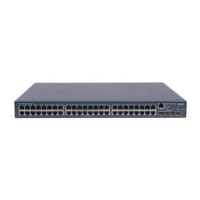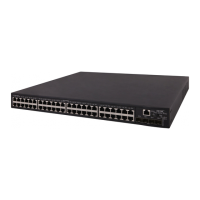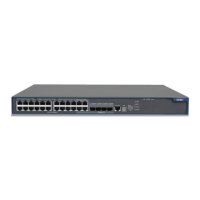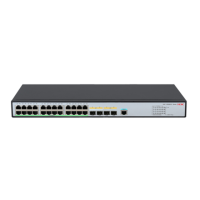1-29
Follow these steps to specify a security policy server:
To do… Use the command… Remarks
Enter system view
system-view
—
Create a RADIUS
scheme and enter its
view
radius scheme
radius-scheme-name
Required
By default, no RADIUS scheme is
present.
Specify a security policy
server
security-policy-server
ip-address
Optional
Not specified by default
z If more than one interface of the device is configured with user access authentication functions, the
interfaces may use different security policy servers. You can specify up to eight security policy
servers for a RADIUS scheme.
z If the RADIUS server and the security policy server reside on the same physical device, you do not
need to configure the IP address of the security policy server.
z The specified security policy server must be a security policy server or RADIUS server that is
correctly configured and working normally. Otherwise, the device will regard it as an illegal server.
Enabling the Listening Port of the RADIUS Client
Follow these steps to enable the listening port of the RADIUS client:
To do… Use the command… Remarks
Enter system view
system-view
—
Enable the listening port of the RADIUS
client
radius client enable
Optional
Enabled by default
Displaying and Maintaining RADIUS
To do… Use the command… Remarks
Display the configuration
information of a specified
RADIUS scheme or all RADIUS
schemes
display radius scheme
[ radius-scheme-name ] [ slot
slot-number ]
Available in any
view
Display statistics about RADIUS
packets
display radius statistics [ slot
slot-number ]
Available in any
view
Display information about
buffered stop-accounting
requests that get no responses
display stop-accounting-buffer
{ radius-scheme radius-server-name |
session-id session-id | time-range
start-time stop-time | user-name
user-name } [ slot slot-number ]
Available in any
view
Clear RADIUS statistics
reset radius statistics [ slot
slot-number ]
Available in user
view

